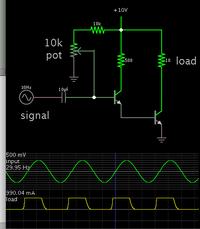Makework
Newbie level 3
Hi All,
I know some basics of how to put together a circuit, but no idea how to create it. I'm trying to create a circuit that would take an audio signal (Lows 20 Hz to high 10,000 Hz or more) to actuate a solenoid. I'm hoping to be able to have the solenoid operate at the frequency (including varying wave shapes) inputted. Is that possible?
I really appreciate the help with this!
I know some basics of how to put together a circuit, but no idea how to create it. I'm trying to create a circuit that would take an audio signal (Lows 20 Hz to high 10,000 Hz or more) to actuate a solenoid. I'm hoping to be able to have the solenoid operate at the frequency (including varying wave shapes) inputted. Is that possible?
I really appreciate the help with this!
